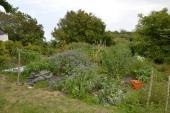












Brenda
Bloom where you are planted.
http://restfultrailsfoodforestgarden.blogspot.com/




pantryparatus.com
Produce, Prepare, Preserve your own food surplus
 1
1








Brenda
Bloom where you are planted.
http://restfultrailsfoodforestgarden.blogspot.com/




 1
1




Idle dreamer








A life worth living is one with no regrets.













For unlimited return on all your investments - Make your deposits at 'The Entangled Bank' !





|
It's never done THAT before. Explain it to me tiny ad:
Learn Permaculture through a little hard work
https://wheaton-labs.com/bootcamp
|






